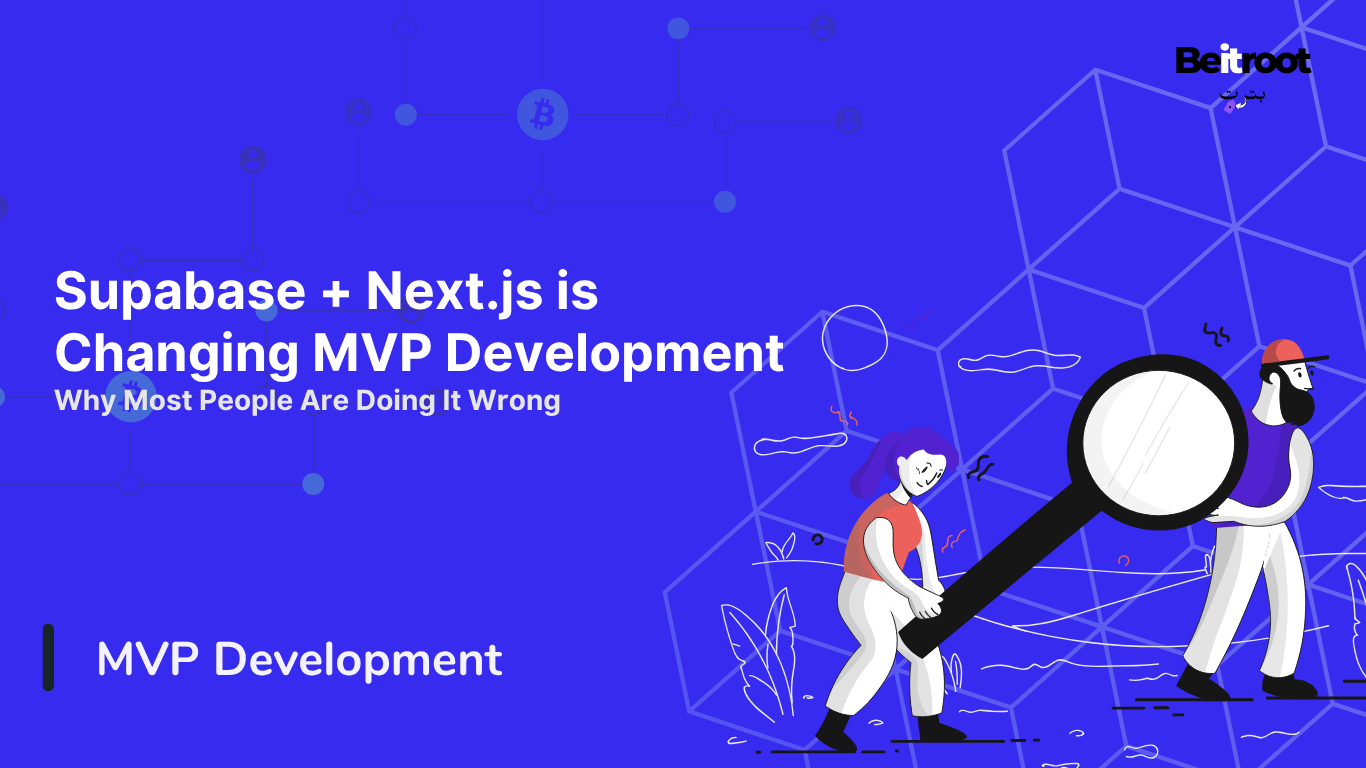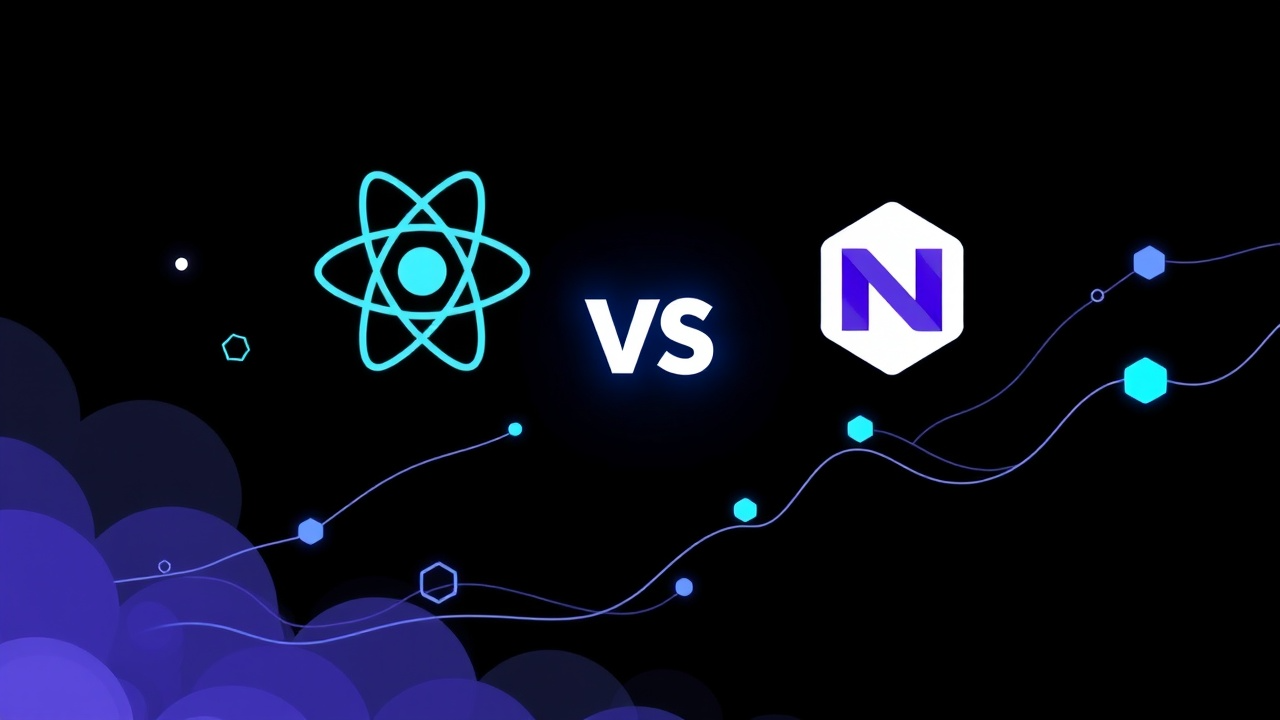
- Editorial-team
- 21 Jul, 2025
- 5 min read
Supabase + Next.js is Literally Changing MVP Development (and Why Most People Are Doing It Wrong)
Alright so here’s the thing.
Building MVPs used to be this never ending process. You’d either spend weeks wiring up your own auth, spinning up Postgres, configuring backend logic, and deploying on 12 different services or worse, slap everything on Firebase and end up in vendor lock in.
But 2025 is different.
Like wildly different.
With Supabase and Next.js coming main stream, MVP development has legit blown up, a speed boost that’s kinda insane. Throw in AI tools like cursor and claude code and you’re shipping full-stack MVPs in a weekend.
Supabase is Just… Built Different
If you haven’t played around with Supabase yet, you’re missing out. it’s basically what Firebase should’ve been. Except instead of weird NoSQL and proprietary logic, you get real Postgres, proper SQL, row-level security, and a backend that feels like it was built for devs bu devs, who actually care about structure. AHH!
What makes Supabase great for MVP development:
- Realtime DB updates out of the box
- Auth that simply just works
- Storage and Edge Functions
- Hosted Postgres with all the goodies (RLS, triggers, extensions, funcitons)
It’s the kind of tool where you build an MVP, but it actually feels like production-grade stuff. Which brings me to Postgres…
Postgres > NoSQL (Especially for MVPs)
Let’s just say it, 80% of apps don’t actually need NoSQL. They need relational data with constraints, foreign keys, and maybe even a lil bit of SQL magic.
Postgres is perfect for MVPs because:
- You can model your data properly from day one
- It scales better than you think (Supabase handles a ton of that infra for you)
- SQL is not that scary, and with Supabase Studio, you barely need to write much anyway
And when your MVP grows into a real product? You’re not rewriting the whole backend like you would with Firebase. Learn more about MVP vs Full Product.
Supabase Auth = Fastest Way to Ship Login/Signup Flows
Setting up auth with Supabase is too easy. Like you get email sign-in, magic links, OTP, social logins, all with a few lines of code. And the best part? You can enforce Row Level Security with role-based access without writing any extra bunch of backend code.
For MVPs that need secured dashboards, multi-user roles, or invite-only access, Supabase Auth is literally the place to go. See how we built secure MVPs.
MVP Development in 2025 is a Different Game
We’re not just coding anymore, we’re co-building with AI.
You open up Cursor, ask for a schema or API integration, scaffold the whole thing in Next.js, connect Supabase, deploy on Vercel. You can literally go from “idea in Notion” to “live MVP” in a weekend.
This isn’t just theory, we’re doing this weekly now. That’s the pace. If you’re still taking 3 months to ship login + signup, you’re overengineering or waiting the for the prophecy.
If you want to see how fast you can build, check out our 30-day MVP guide.
Stop Building MVPs, Start Building MLPs
Here’s a truth most people skip: MVPs are not supposed to be garbage prototypes with zero backend logic and hardcoded data.
The goal now is Minimum Lovable Product — something you can sell, onboard users on, and test for real usage.
If you’re building an MVP in 2025, it needs to have:
- Stable auth (Supabase got you)
- Real database (not fake JSON)
- Clean-ish UI (Next.js + Tailwind makes this easy)
- Some sort of analytics (even if it’s just Vercel or LogSnag)
For more on building lovable MVPs, read Mastering the Art of MVP Development.
Common MVP Development Mistakes in 2025
Let’s keep it real. Most MVPs I see on X look sick… until you actually open the codebase. Then it’s the real garbage.
Here’s what most devs (and founders) still do wrong:
- No planning, just pure vibing
- No security at all (open Supabase tables to the world??)
- Backend logic hardcoded inside pages
- No access rules
- Random folder structures that scale like garbage
- Zero consideration for growth
You’re trying to test an idea, cool. But don’t make something so fragile it breaks with 5 users. See our case study on Stors for how to do it right.
MVP Best Practices
Look, speed is key when developing MVP, but if you do it sloppy, you’ll waste more time fixing it later than ever. Some minimum coding standards that takes just 5% more time but saves you weeks later:
- Use Row-Level Security in Supabase
- Don’t put business logic in Next.js API routes, use Edge Functions or Server Components (SSR) wisely
- Stick to clean folders:
pages,components,lib,hooks, etc. - Use
.enveven if it’s just one secret, don’t hardcode (Bare minimum) - Write down a 2-day plan before jumping in (Let’s not rot the brain )
- Version control… use it
- Pick proper naming, don’t name tables
stuff,thing, ordata123
For more best practices, check out Monoliths vs Microservices for MVPs and Choosing the Right Framework for Your MVP.
Wrapping Up (Because I Need Sleep)
Supabase + Next.js isn’t just “faster”, it’s smarter. It’s devs finally getting full-stack power without needing 10 tools and a DevOps guy.
If you’re serious about MVP development in 2025, you don’t need to spend $100’s of thousand dollars. You need the right stack, a weekend, and a plan that goes beyond just shipping pixels.
Don’t just vibe. Build with intent. And please, for the love of God, don’t leave your Supabase tables wide open.
Want to see more real-world results? Explore our case studies or contact us to start your own MVP journey.
Peace ✌️


